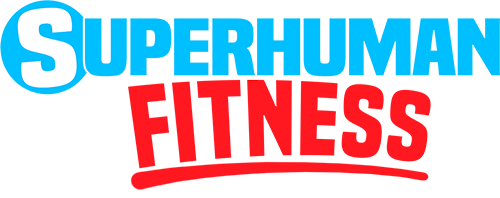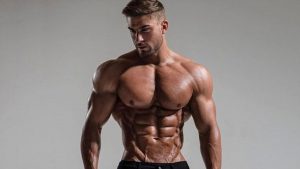Doctors see shoulder injuries in gym-goers all the time, and they're a common ailment for people that work out. In order to reduce your risk of injury, you should always be strengthening the muscles surrounding your shoulder. By doing a dumbbell shoulder workout, you can greatly reduce your chances of getting injured.
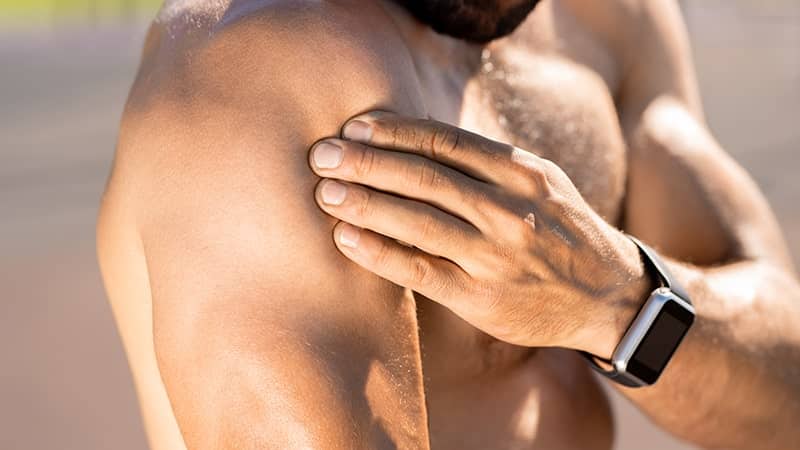
Stronger shoulders are a must for any athlete looking to increase his athletic prowess. Shoulder exercises help build shoulder strength and prevent injury when performing overhead lifts like the snatch or overhead squat, as well as gymnastics movements like pullups or handstand walks.
Trainers recommend that you develop well-rounded shoulders not just because of their aesthetic appeal, but for the functional benefits they offer. The deltoids — composed of three separate sets of muscle — are a vital part of your body's kinetic chain, helping you move more easily in day-to-day life and allowing you to lift heavier weights when working out.
The shoulders are among the most important muscles we use in daily life, pushing, pulling, lifting, and stretching us to our limits. To build robust shoulders, you need to target them from multiple angles — from above, from below, and sideways — to engage all three heads of the deltoid muscle. When you do this regularly, you'll have the strength and stability you need to succeed both at the gym and throughout your life.
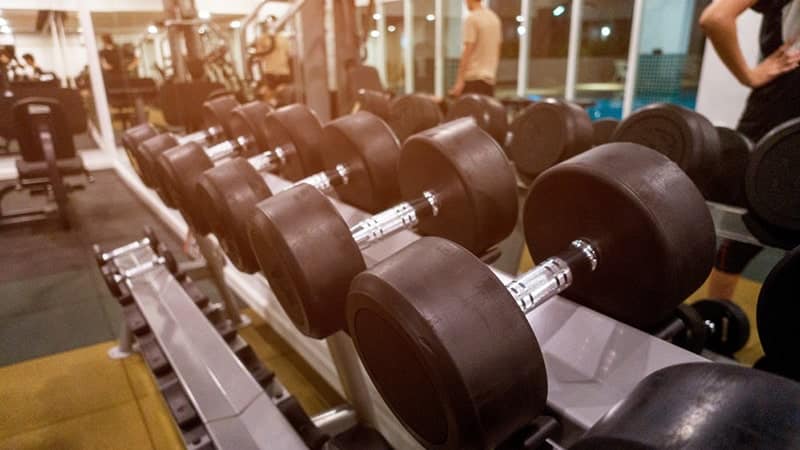
Dumbbells are among the most basic and versatile workout tools. Unlike free weights, machines, and even barbells, dumbbells allow you to move freely in every direction. With one or two dumbbells, you can perform a huge variety of exercises that will strengthen your chest, back, arms, abs, and legs.
I'll outline some exercises that you can integrate into your dumbbell shoulder workout if you’re a beginner or if you’re lacking in certain areas.
Dumbbell Shoulder Press
This exercise is an excellent way to strengthen your shoulders and teach you how to press weights overhead in a safe way. Your improved posture does not only help with pressing but also with any other type of exercise you do in the gym.
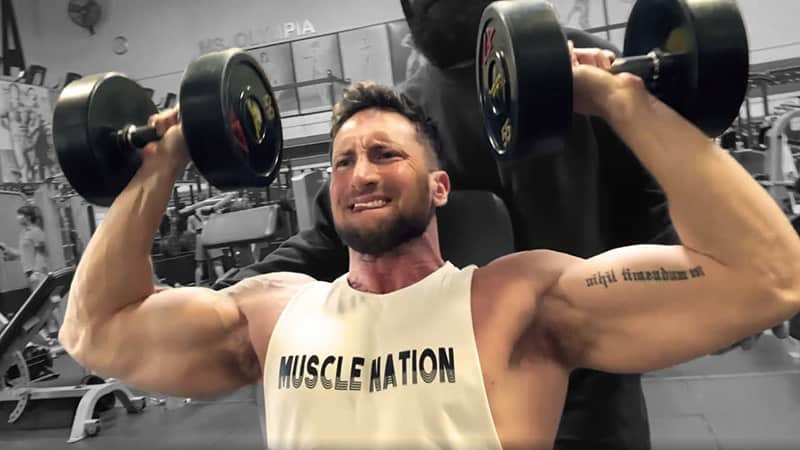
To perform standard shoulder press with dumbbells, stand with feet shoulder-width apart and hold two dumbbells at shoulder height, palms facing the same direction. Raise both dumbbells, ending with arms extended overhead. Then slowly return to the start position. The seated dumbbell press is just as effective.
When training with dumbbells, it's important to know that as you get stronger, you won't be able to make the same jumps in weight that you would be able to if your weights were on a fixed bar.
For example, going from 50 lb dumbbells to 55 lb dumbbells is an overall increase of 10 lbs.
Dumbbell Push Press
With the dumbbell push press, you can utilize your legs to drive from the ground up. It's an athletic, ground-based movement. However, it's important to be sure you're doing it properly. Keep your abs engaged while driving the dumbbells overhead.
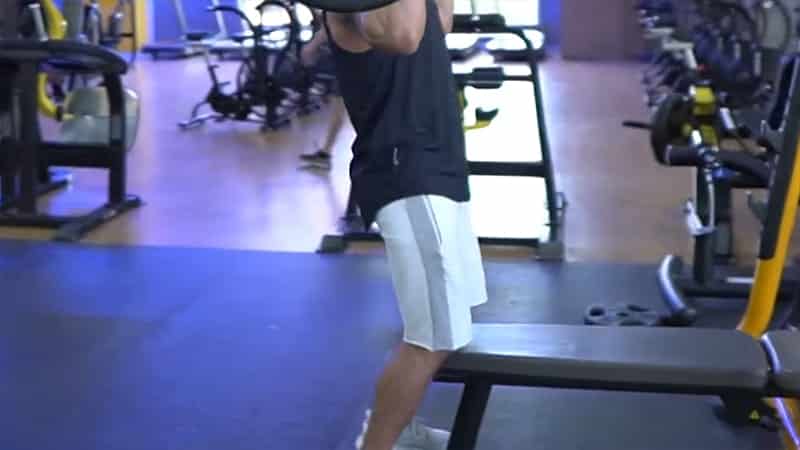
Standing with dumbbells in your hands, press them over your head. Return to the starting position, and repeat. The dumbbell push press is an athletic movement that's designed to rely on a rapid acceleration from the ground up, but it's important to use the right form so you don't injure yourself.
When doing the push press, make sure you're bending your knees and properly loading the hips. If you want to apply force, strength, and speed to a movement, you want to utilize the biggest muscles in your body: those around your hips. So stick your buns out, hinge at the hips, and drive up overhead using hip power!
Dumbbell Lateral Raise
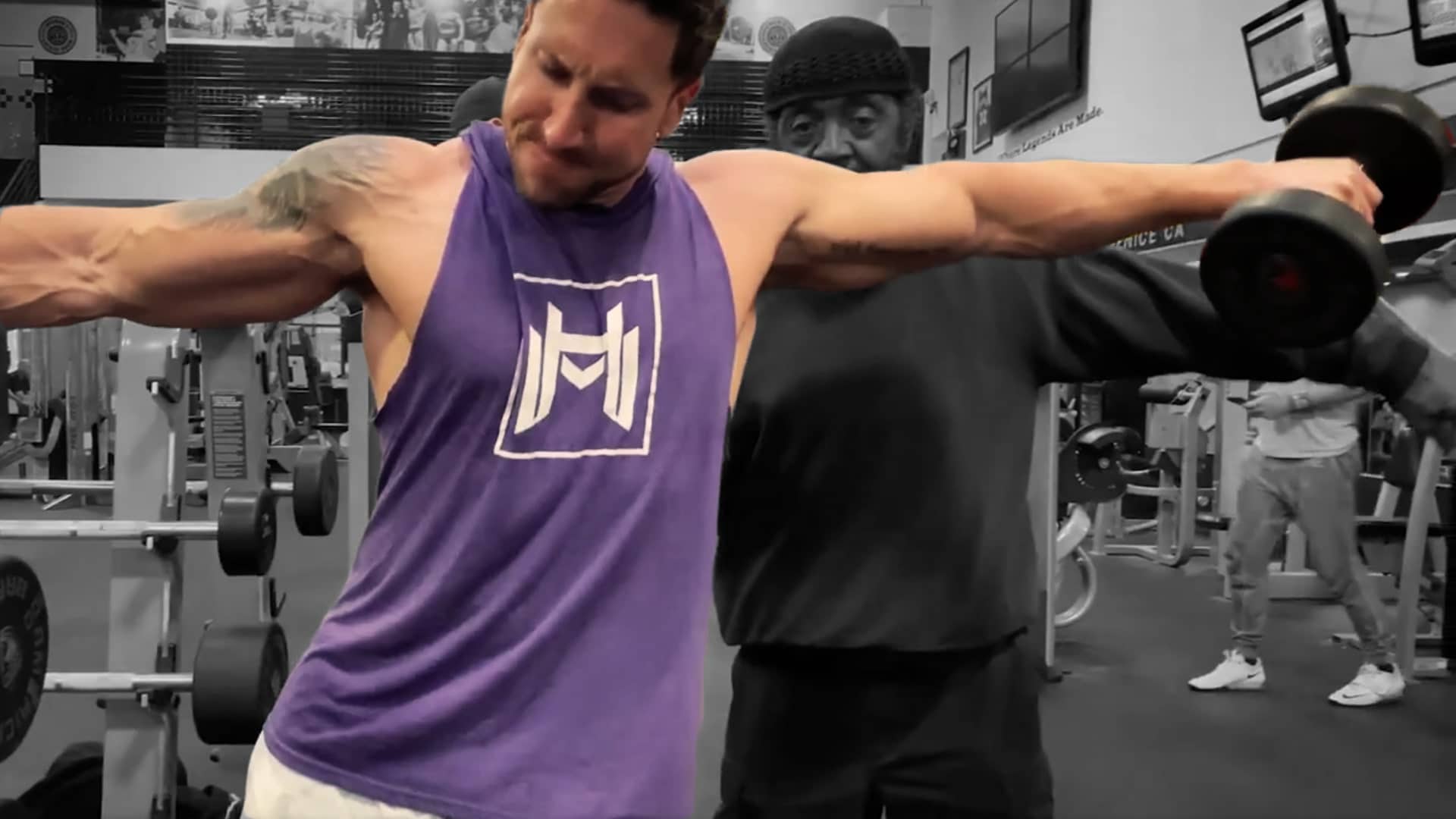
You should remember to take care of the shoulders in this exercise. Raise the dumbbells until your thumbs are higher than your pinky fingers, and then lower them under tension.
Avoid momentum and keep going until you can't do another rep. The shoulder muscles will contract at the top of the dumbbell lateral raise.
Lateral Cheat Raise
In order to take a muscle closer to a hypertrophy response, it's important to apply both stress and thorough failure. Without resting first, pick up a lighter weight and perform a dumbbell cheat lateral raise.
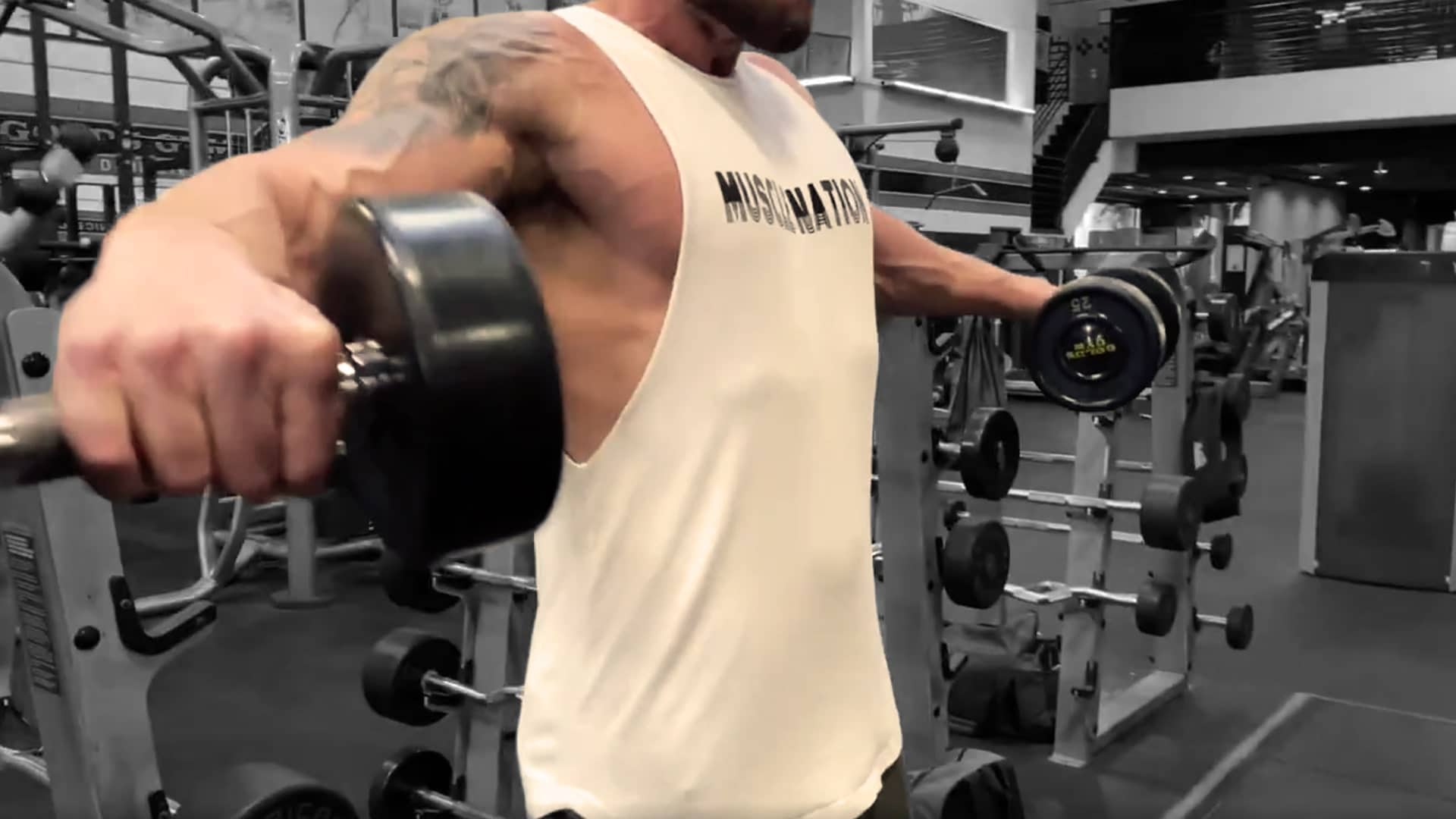
In this exercise, you will stand with your feet shoulder-width apart holding dumbbells in both hands. You will then lift the dumbbells until they are parallel to the floor with a slight bend in your elbows. Finally, you will lower the dumbbells again to your original position.
Front Raise
Whether you prefer the barbell or the weight plate, this shoulder exercise is guaranteed to bring about some seriously intense workouts. Don't max out on the weight, though — if you're feeling the burn, you're doing it right, but if you feel an injury coming on, stop immediately.
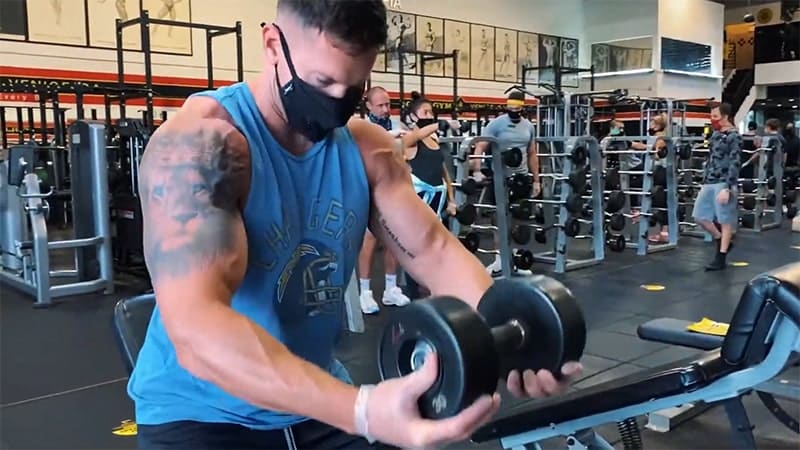
To execute a perfect front raise, you want your feet to be shoulder-width apart and your core to be tight. Then retract your shoulder blades into your back and keep your arms straight as you lift the weight. Keep steady breaths going as you lower the weight and then repeat.
Figure Eight
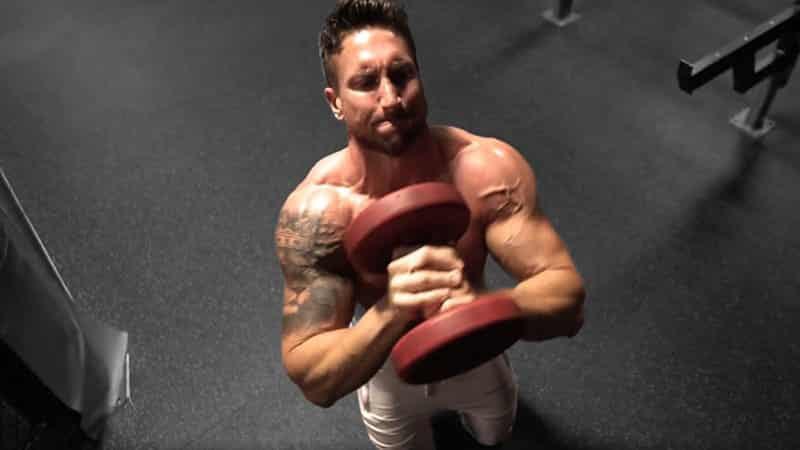
We call this movement the Plate 8 because of its resemblance to a number 8 on a license plate, and it is possible to do this movement with a single dumbbell. Facing forward, hold the dumbbell straight out in front of you with both hands and move the weight in a figure 8 motion. By now your upper arm and shoulders should be burning, but don't quit — you have to push through!
Dumbbell Pressout
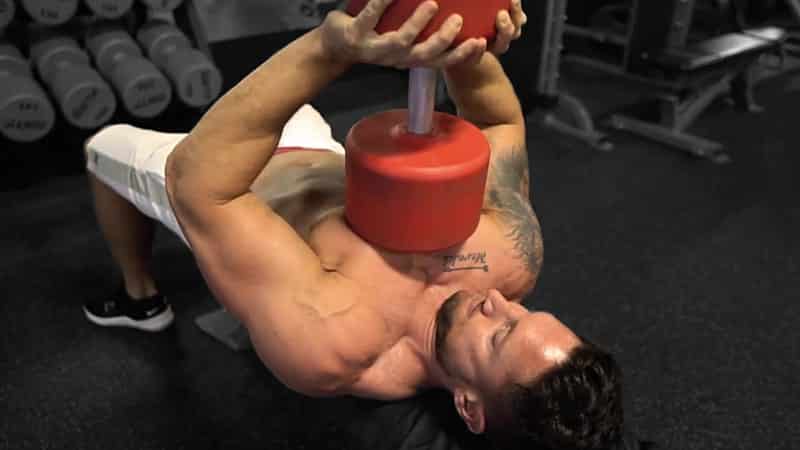
When the dumbbell is closer to your chest, you'll have a brief respite in your range of motion. This will allow you to keep good form and rep out more reps until failure. As soon as you've reached failure, you'll finally be able to put down the dumbbells and rest. This is an excellent option for shoulder growth because it creates a high metabolic demand that triggers hypertrophy.
As the weight nears your chest, it will allow you to keep going and hit failure. As soon as you've reached failure, you're finally finished with the set.
Dumbbell Power Clean-Over
The dumbbell power clean-over allows you to train several of your muscle groups in one go. This move will allow you to strengthen your arms, legs, back, and core. It will make you stronger and faster for recreation or competition.
With the dumbbell power clean-over, you get the quick results of the dumbbell clean, but with the full range of motion of a dumbbell snatch. You'll be able to practice your timing and really master the snatch movement. I recommend this exercise to anyone who wants to build explosive power in their upper body and shoulders.
Stand up straight with your feet at shoulder width. Holding a dumbbell in each hand, lift the dumbbells and extend your arms out in front of you until they're at shoulder height with your palms facing up. Push the dumbbells up, extending your arms as high as you can, and then return to the starting position, lowering your arms.
Prone Floor Press
It's important to get the shoulders off the ground in order to perform this exercise properly. If you don't have enough clearance, you will not be able to complete the movement adequately.
The weight we are using is light enough to target all of our mid-scapular muscles, including the rhomboids, lower traps, teres minor, and even a little bit of our serratus anterior.
The prone press is a shoulder corrective exercise that requires two dumbbells. This exercise is similar to the face pull with overhead press, and can be done in a limited space when you don't have access to the cable machine.
Standing Dumbbell Shrug
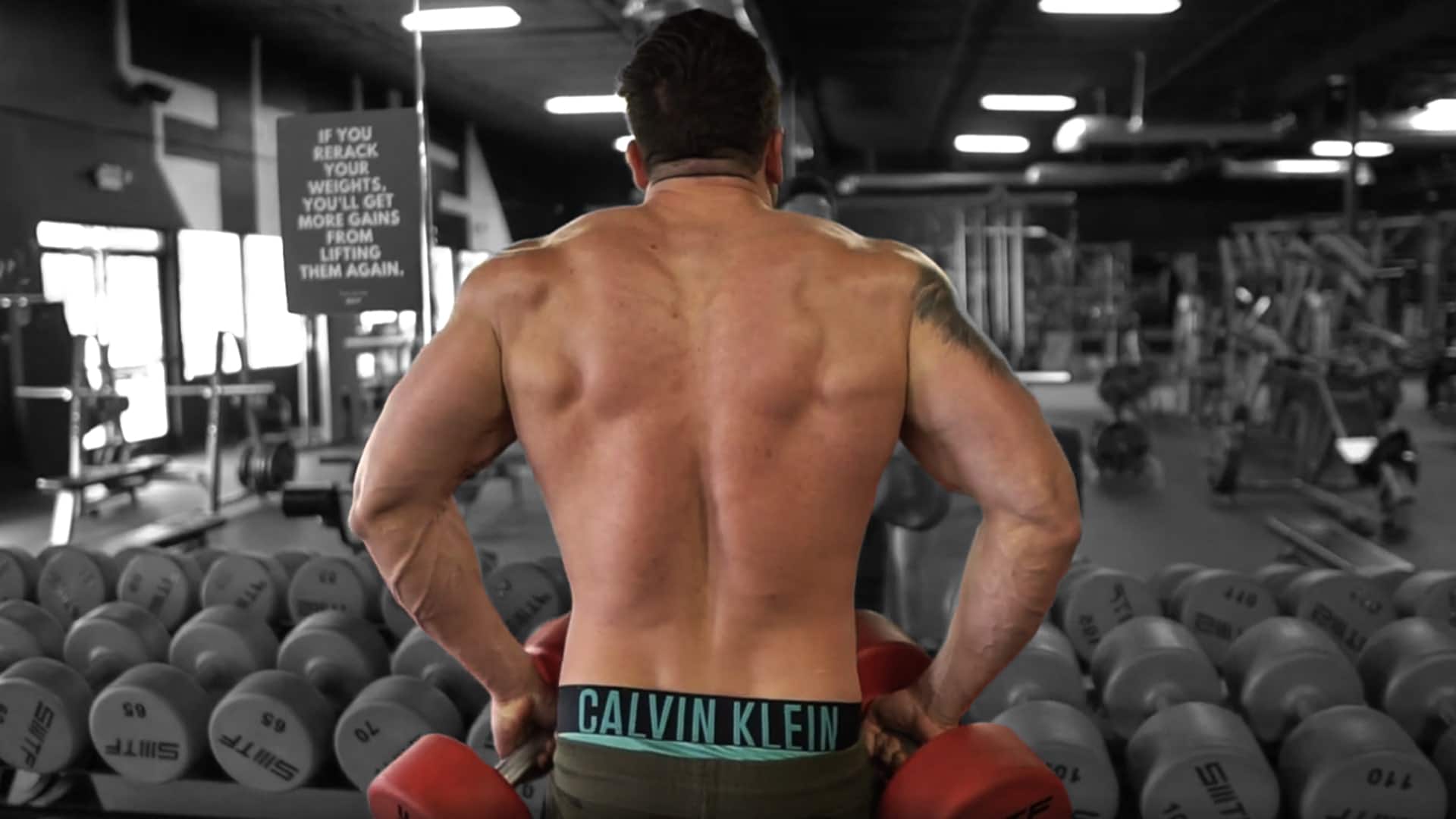
At the end of your workout, you simply cannot overlook a neck and shoulder exercise like the dumbbell shrug.
Keeping your feet even with your shoulders, bend your knees and pick up the dumbbells, bringing them to waist level. Next, lift your shoulders up and back, squeezing for about five seconds before releasing them.
Keep the movements restricted to your shoulders, meaning your arms should be relatively loose and the dumbbells should only be in contact with your torso.
Dumbbell Rear Delt Fly
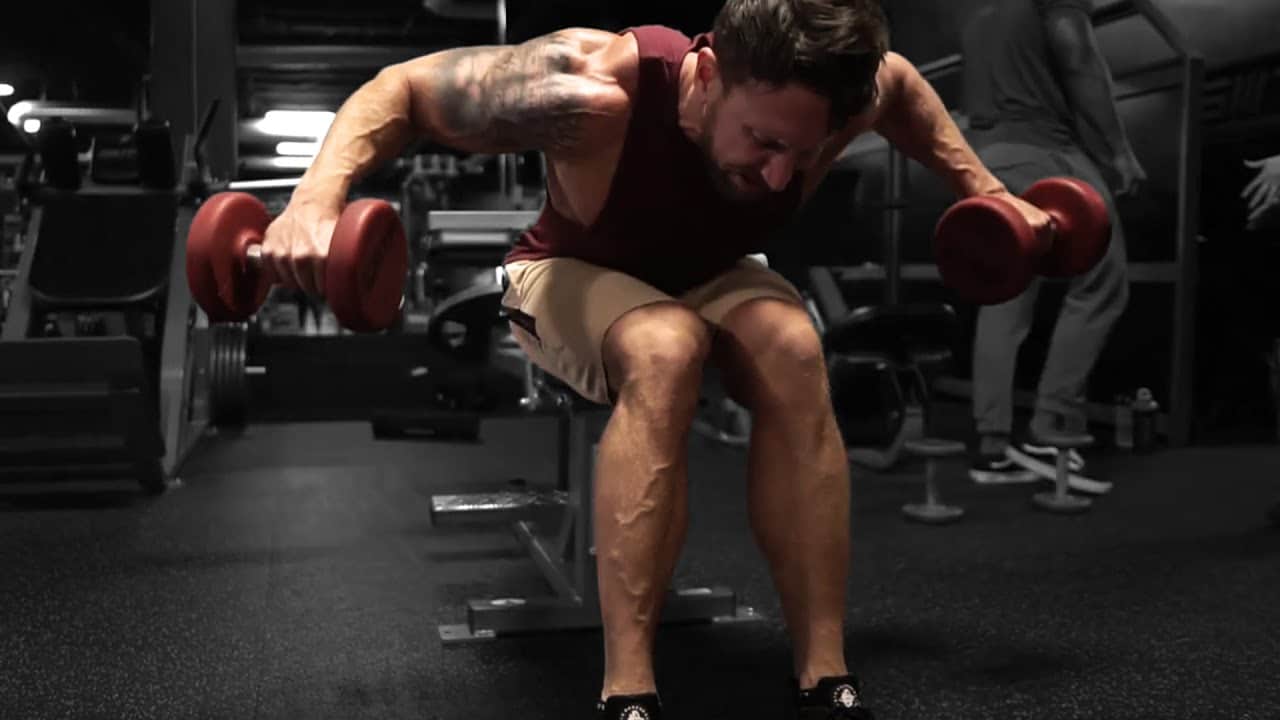
The dumbbell rear delt fly is great for targeting your posterior delts. Sit down on the front part of a bench with your feet close to each other. Bend over and keep the dumbbells under your legs with your elbows bent. Next, lift the dumbbells up laterally while rotating your wrist counter clockwise. Squeeze the rear delts up top and then slowly return to the starting position.
What Muscles Will This Dumbbell Shoulder Workout Hit?
Your shoulder muscles can be divided into two groups: extrinsic muscles and intrinsic muscles. Extrinsic muscles are connected to the torso and its bones, while intrinsic muscles connect to the bones of the upper torso (scapula, clavicle). There are a variety of distinct muscles within each group. Let's have a look at the muscles targeted by this dumbbell shoulder workout.
Traps
The trapezius is a triangular muscle that runs down the back and crosses the shoulder blade. When you raise your arm, it helps pull your shoulder up and back. You have one on each side of your body.
Lats
You may know it as your "latissimus dorsi," but this big, beefy muscle deserves a noble title. The lat is the broadest muscle in the human body, which its name translates to — and it’s one of the largest muscles in the human body as well. The lat helps internal rotation and extension of the arms.
Deltoids
The deltoid muscle is named for the Greek letter delta (Δ). It is a triangular muscle that sits atop the shoulder joint and breaks into three main muscle fibers: anterior, middle, and posterior. Like many other muscles, the deltoid originates at the spine and passes obliquely over the shoulder joint, inserting at various places on the humerus. The anterior deltoid is visible in the upper arm.
Rhomboids
Rhomboids are an exciting group of muscles that play a key role in shoulder retraction. Located in the middle of your back, between the scapulae, these rhombus-shaped muscles are divided into two segments on each side of the torso.
Levator Scapulae
The levator scapulae muscle is primarily responsible for lifting the scapula bone, which connects the humerus to the clavicle. In short, the levator scapulae's job is to lift your shoulder.
Rotator Cuffs
The rotator cuff muscles and tendons are a group of muscles and tendons responsible for stabilizing the shoulder joint, preventing it from hyper-extending, and assisting the upper arm bone from popping out of its socket. Tendons attach muscle to bone, while muscles contract and force tendons to pull or push bones.
Teres Major
The small muscle that runs from under the shoulder joint toward the back of your armpit is called the teres major muscle. It's closely linked to the latissimus dorsi.
